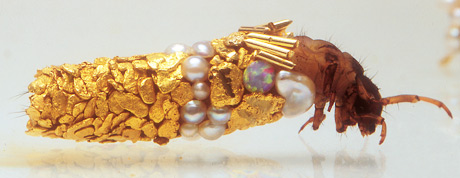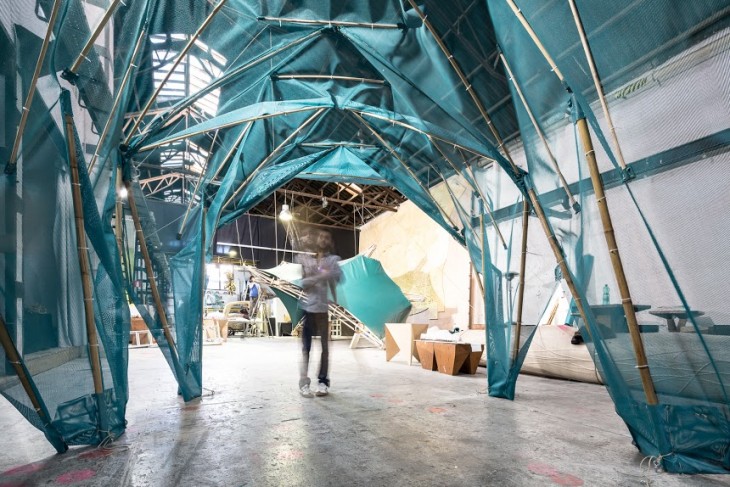SO.15 – Elective Seminar
LIGHTWEIGHT STRUCTURES _ ADAPTIVE NESTING
Tutors: Silvia Brandi
Computational Expert: Rodrigo Aguirre
How do we inhabit in the desert if there is just sand? And the north pole where the only material is ice? How would we inhabit the bottom of the sea or the surface of Mars? And how will we build the habitat of the future and which will it be the material available?
The way humans and animals build their dwellings is highly conditioned by the limited available resources in a certain environment: a key point of the success of a certain species is based on adaptability, considered as the capability to cover the basic necessities for survival, taking the maximum advantages of what it’s there.
A good example of adaptation is the one of the caddis fly, a small winged insect closely related to the butterfly. The larvae of caddis flies live in ponds and, in order to protect their developing bodies, they use to manufacture cases spun from silk and other substances—grains of sand, particles of mineral or plant material, bits of fish bone or crustacean shell—readily available in their ecosystem. It is interesting to remember that in the early 1980s the French artist Hubert Duprat started creating marvelous jewelry based on this concept: just by carefully removing the larvae from their original cases and letting them create new sheaths out of gold spangles and precious stones.

Based on the idea of adaptation to a limited resource environment this course is oriented to explore the possibilities of imagining and building the dwelling of an hypothetical post consumistic era, by taking advantages of whatever material will be left available. Therefore the objective of the course is to build a series of pavilions which will represent the dwellings of the future. Working on the concept of “components” we are going to explore the structural possibilities hidden within each basic element, in order to build a series of 1:1 structures, designed after manual testings and digital simulations. Through the understanding of the objects capacities, characteristics and limitations, we will be able to link the physical model properties to a digital environment. This allows us to increase the scale in the computation exploration, run simulations, dictate geometries, connectivities and assembly manufacturing protocols to create complex component based systems.
Working with developing the “rules of the game”, we will start by understanding the parametric properties of the primitive component and later with the help of algorithmic tools such as grasshopper, we can parametrically control our designs. By introducing recursivity procedures with Anemone we can design complexity through multiple loops to regenerate and create an adaptive design growth system. Consequently, using live physics simulations with Kangaroo we will be able to test the structure’s system behavior resulting in a variety of digitally designed iterations. Such algorithms are means to enhance the design development process towards the final construction.
